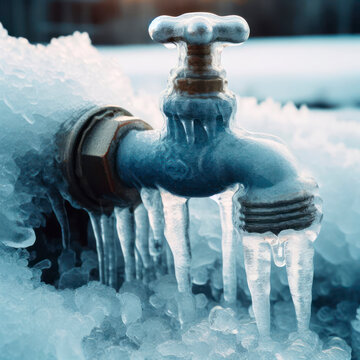Avoiding Frozen Pipes: Best Tips for Cold Weather
Avoiding Frozen Pipes: Best Tips for Cold Weather
Blog Article
The article down below pertaining to 6 Ways to Prevent Frozen Pipes is exceedingly informative. You should check it out.

Cold weather can ruin your plumbing, specifically by freezing pipes. Below's exactly how to avoid it from occurring and what to do if it does.
Intro
As temperatures decline, the danger of icy pipes increases, possibly bring about pricey repair work and water damages. Recognizing just how to avoid frozen pipelines is essential for homeowners in cool environments.
Prevention Tips
Shielding at risk pipes
Wrap pipelines in insulation sleeves or use warmth tape to shield them from freezing temperatures. Concentrate on pipes in unheated or exterior areas of the home.
Heating strategies
Keep interior spaces properly heated up, specifically locations with pipes. Open cabinet doors to permit warm air to circulate around pipelines under sinks.
Exactly how to identify icy pipes
Try to find decreased water circulation from faucets, uncommon smells or noises from pipelines, and noticeable frost on subjected pipelines.
Long-Term Solutions
Structural modifications
Take into consideration rerouting pipes away from outside wall surfaces or unheated areas. Add additional insulation to attic rooms, cellars, and crawl spaces.
Upgrading insulation
Invest in high-grade insulation for pipelines, attic rooms, and wall surfaces. Correct insulation helps maintain constant temperatures and lowers the risk of icy pipes.
Shielding Outdoor Pipes
Garden tubes and outside faucets
Detach and drain yard pipes prior to winter season. Mount frost-proof faucets or cover outdoor taps with protected caps.
Understanding Frozen Pipes
What triggers pipes to freeze?
Pipes ice up when subjected to temperatures listed below 32 ° F (0 ° C) for prolonged durations. As water inside the pipes freezes, it broadens, taxing the pipeline wall surfaces and possibly causing them to burst.
Risks and problems
Frozen pipelines can bring about water disruptions, residential property damages, and pricey repairs. Burst pipes can flooding homes and cause considerable architectural damages.
Indicators of Frozen Water Lines
Determining icy pipes early can stop them from breaking.
What to Do If Your Pipes Freeze
Immediate activities to take
If you think frozen pipes, keep taps open to relieve pressure as the ice thaws. Make use of a hairdryer or towels taken in hot water to thaw pipelines slowly.
Conclusion
Preventing icy pipelines requires aggressive measures and fast reactions. By understanding the causes, indicators, and preventive measures, home owners can shield their plumbing during cold weather.
5 Ways to Prevent Frozen Pipes
Drain Outdoor Faucets and Disconnect Hoses
First, close the shut-off valve that controls the flow of water in the pipe to your outdoor faucet. Then, head outside to disconnect and drain your hose and open the outdoor faucet to allow the water to completely drain out of the line. Turn off the faucet when done. Finally, head back to the shut-off valve and drain the remaining water inside the pipe into a bucket or container. Additionally, if you have a home irrigation system, you should consider hiring an expert to clear the system of water each year.
Insulate Pipes
One of the best and most cost-effective methods for preventing frozen water pipes is to wrap your pipes with insulation. This is especially important for areas in your home that aren’t exposed to heat, such as an attic. We suggest using foam sleeves, which can typically be found at your local hardware store.
Keep Heat Running at 65
Your pipes are located inside your walls, and the temperature there is much colder than the rest of the house. To prevent your pipes from freezing, The Insurance Information Institute suggests that you keep your home heated to at least 65 degrees, even when traveling. You may want to invest in smart devices that can keep an eye on the temperature in your home while you’re away.
Leave Water Dripping
Moving water — even a small trickle — can prevent ice from forming inside your pipes. When freezing temps are imminent, start a drip of water from all faucets that serve exposed pipes. Leaving a few faucets running will also help relieve pressure inside the pipes and help prevent a rupture if the water inside freezes.
Open Cupboard Doors
Warm your kitchen and bathroom pipes by opening cupboards and vanities. You should also leave your interior doors ajar to help warm air circulate evenly throughout your home.

We are very involved in How to Prevent Your Pipes From Freezing and I really hope you liked our page. Remember to take a moment to promote this post if you liked it. Thank-you for going through it.
Call Today Report this page